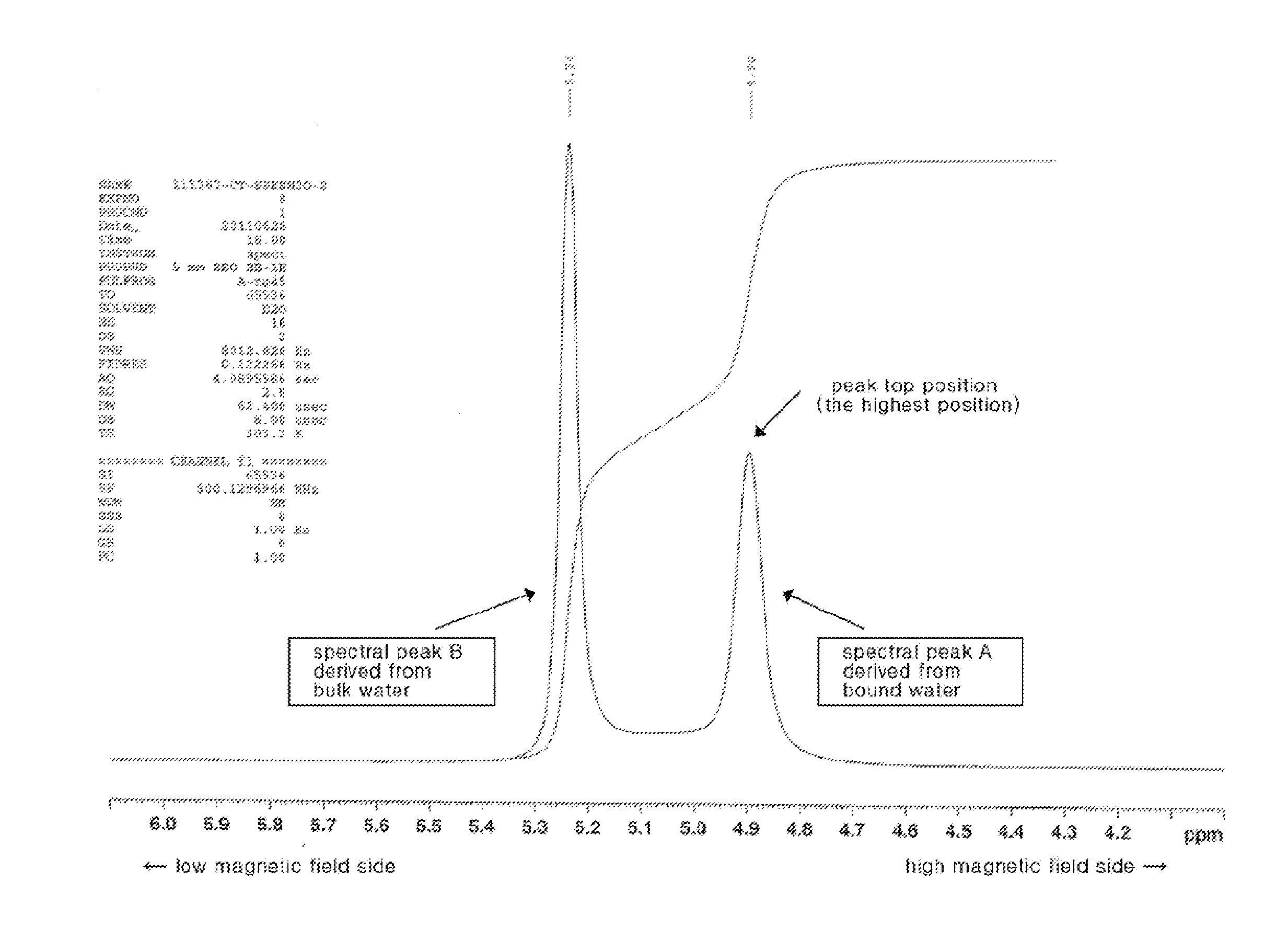Reverse osmosis membrane for wastewater treatment
a reverse osmosis membrane and wastewater treatment technology, applied in the direction of moving filter element filters, filtration separation, separation processes, etc., can solve the problems of unavoidable pretreatment such as sterilization of the water to be treated or removal of turbid components, periodical washing of the membrane, and significant reduction of the property, so as to achieve the salt rejection rate and water permeability, the effect of high resistance to chemicals
- Summary
- Abstract
- Description
- Claims
- Application Information
AI Technical Summary
Benefits of technology
Problems solved by technology
Method used
Image
Examples
example 1
[0092]Sulfonated poly(aryl ether sulfone) type polymer (brevity code: SPN-23) obtained by polymerization of 11.5 mol % of 3,3′-disulfo-4,4′-dichlorodiphenylsulfone disodium salt (brevity code: S-DCDPS), 38.5 mol % of 2,6-dichlorobenzonitrile (brevity code: DCBN) and 50 mol % of 4,4′-biphenol was dried in advance at 110° C. for 12 hours. After that, 71.5 parts by weight thereof was weighed and then 123.2 parts by weight of N-methyl-2-pyrrolidone (brevity code: NMP) and 25.3 parts by weight of ethylene glycol (brevity code: EG) were poured into a separable flask followed by stirring at 170° C. for 3 hours to give a uniform polymer solution having the polymer concentration of 32.5% by weight.
[0093]This polymer solution was charged, as a dope, into a spinning device having a plunger-type extruding function. Temperature of the dope was kept at 150° C., and the dope was sent to a tube-in-orifice type nozzle and discharged at the rate of 0.24 g / minute from a dope extruding annular orifice ...
example 2
[0094]The hollow fiber membrane obtained in Example 1 was dipped into 10% by weight aqueous solution of lithium chloride for one night so that the counter cation (X) on the sulfonic acid group of the formula [I] was changed to lithium ion. Details of the membrane and the evaluated result are shown in Table 1.
example 3
[0095]The hollow fiber membrane obtained in Example 1 was dipped into 10% by weight aqueous solution of potassium chloride for one night so that the counter cation (X) on the sulfonic acid group of the formula [I] was changed to potassium ion. Details of the membrane and the evaluated result are shown in Table 1.
PUM
| Property | Measurement | Unit |
|---|---|---|
| outer diameter | aaaaa | aaaaa |
| outer diameter | aaaaa | aaaaa |
| thickness | aaaaa | aaaaa |
Abstract
Description
Claims
Application Information
 Login to View More
Login to View More - R&D
- Intellectual Property
- Life Sciences
- Materials
- Tech Scout
- Unparalleled Data Quality
- Higher Quality Content
- 60% Fewer Hallucinations
Browse by: Latest US Patents, China's latest patents, Technical Efficacy Thesaurus, Application Domain, Technology Topic, Popular Technical Reports.
© 2025 PatSnap. All rights reserved.Legal|Privacy policy|Modern Slavery Act Transparency Statement|Sitemap|About US| Contact US: help@patsnap.com



